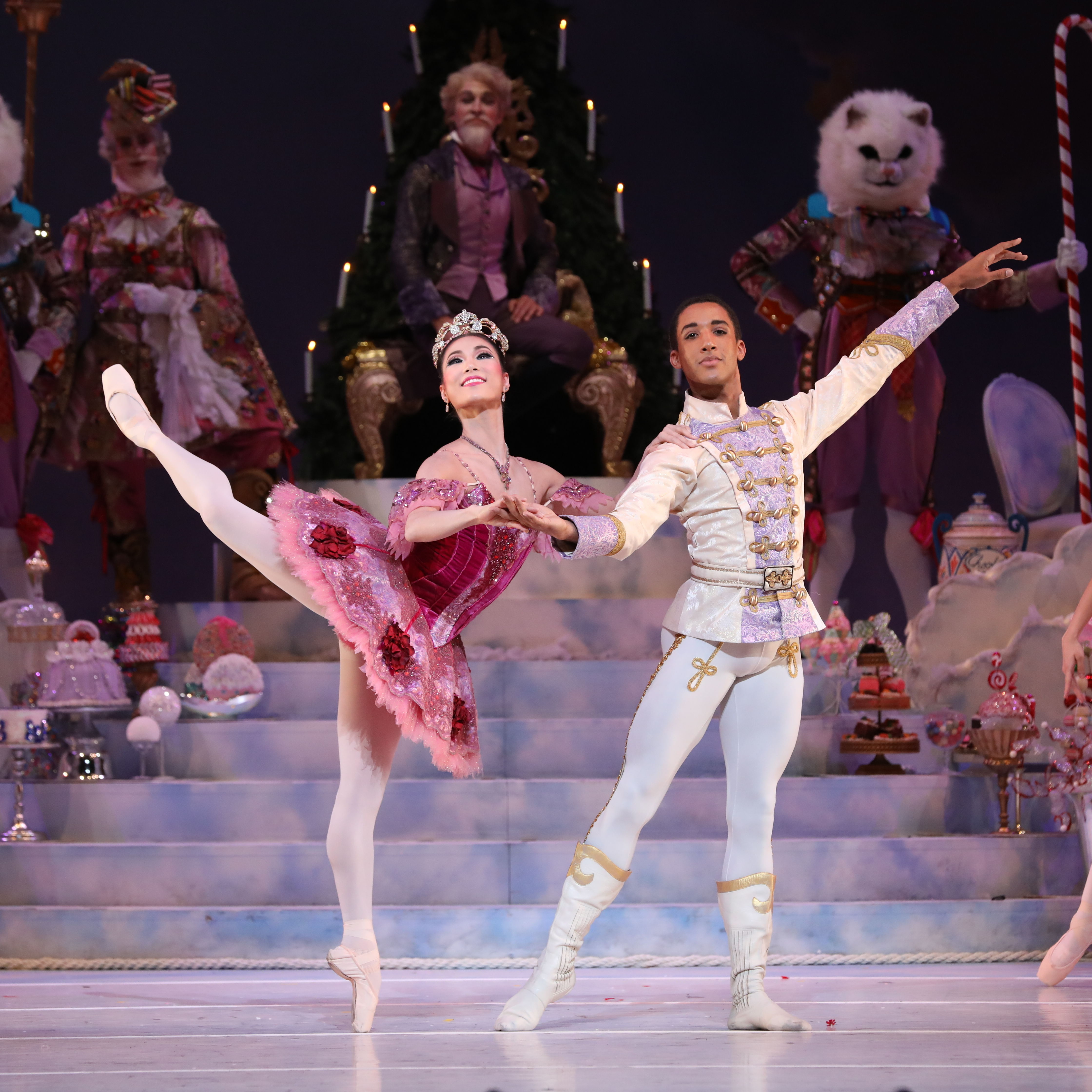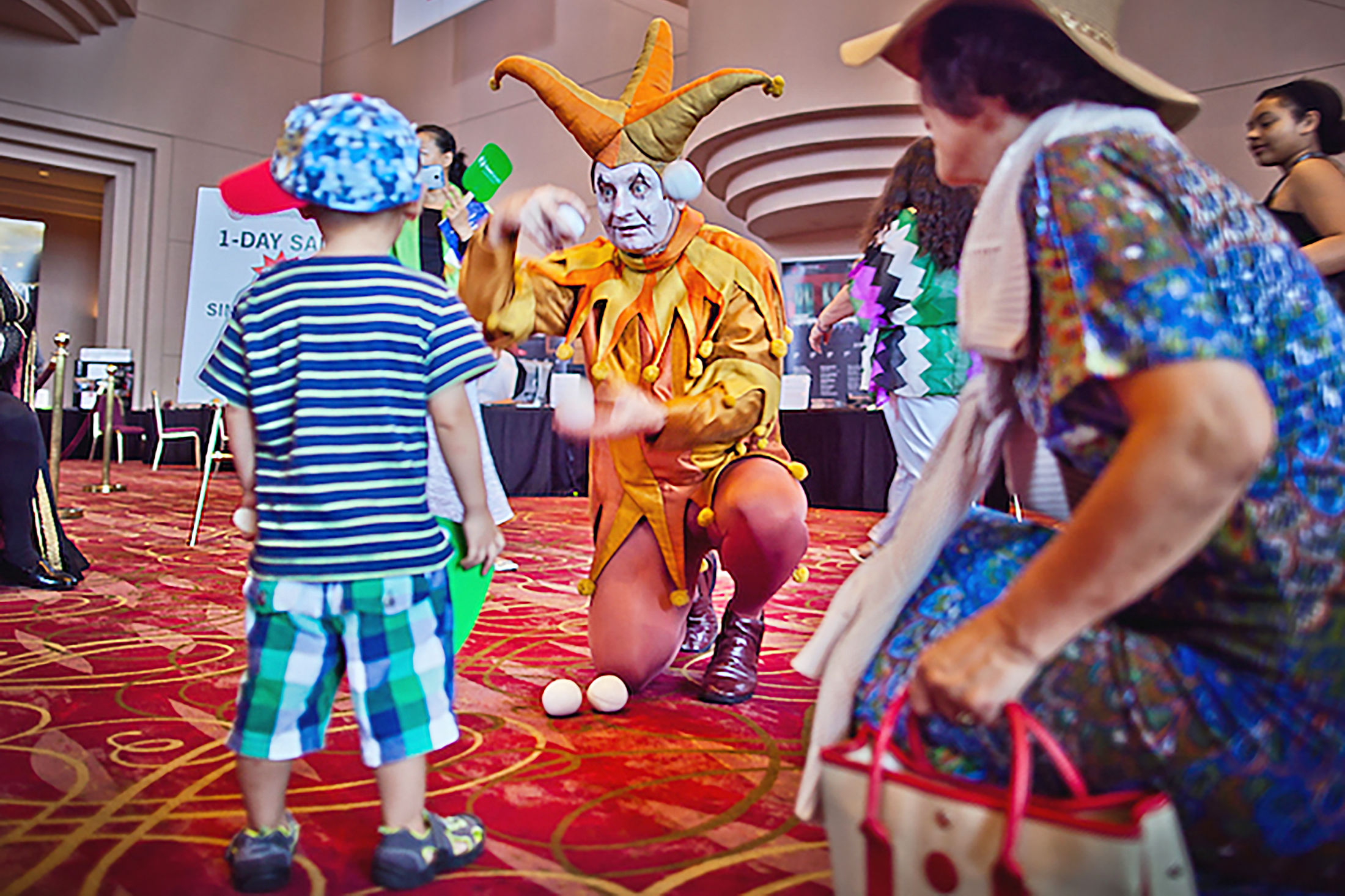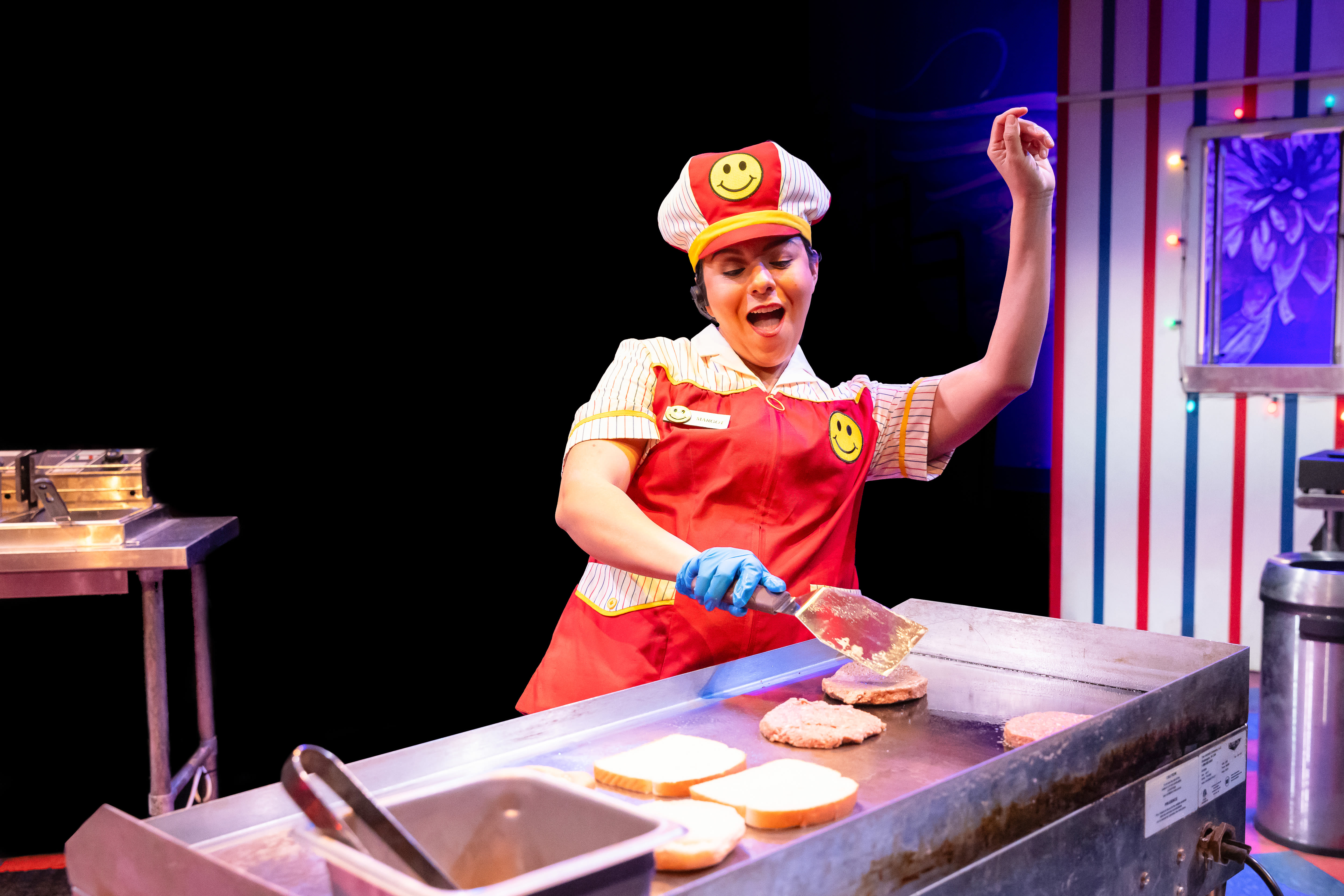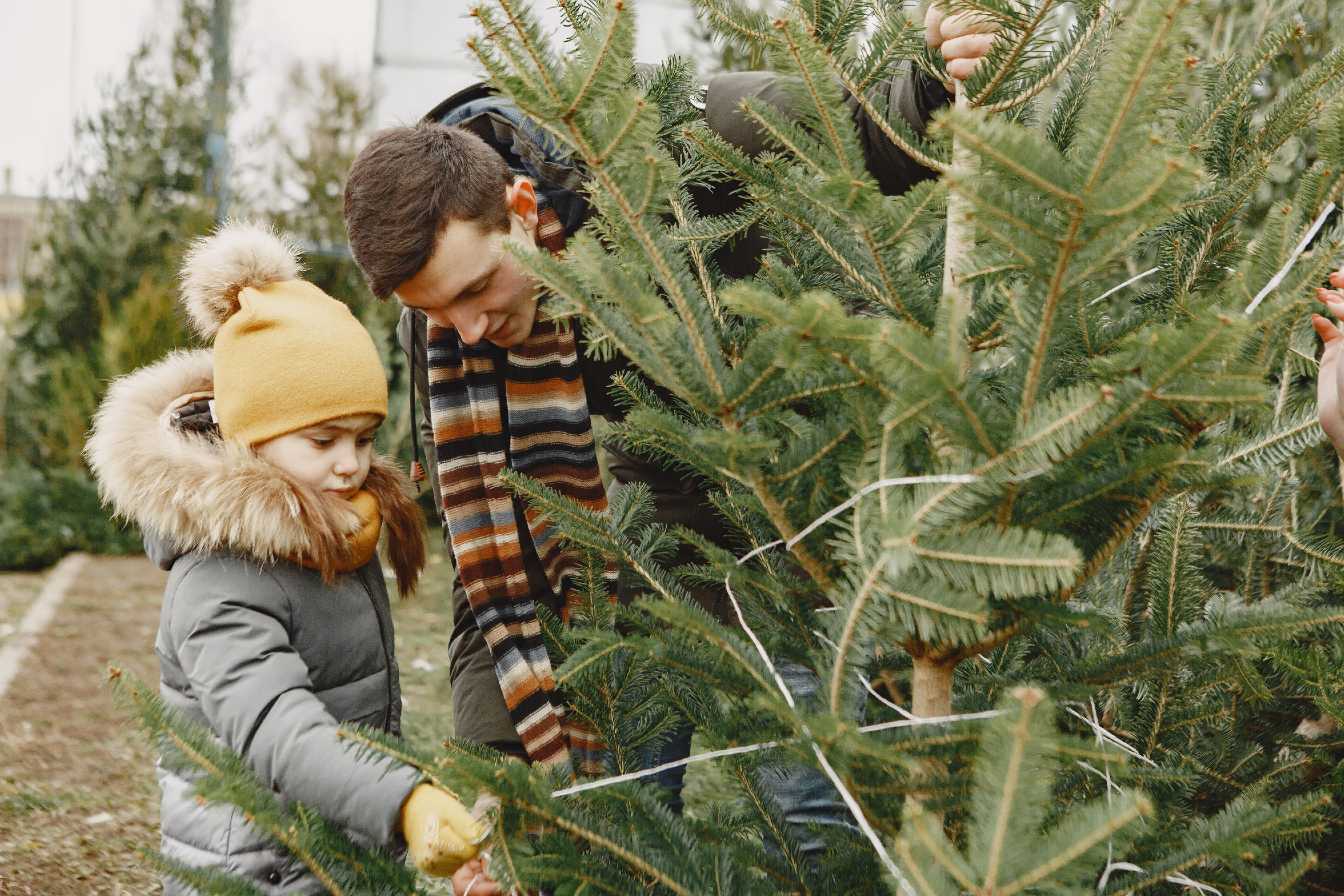For Houston’s Costumers, the Holiday Season Starts Well Before December

Sandra Fox, head of costumes at the Houston Ballet, oversees everything from wig making to adjusting sequins and candy props every year as her team prepares for The Nutcracker.
Image: Anthony Rathbun
On a crisp fall Houston day, while the rest of us were getting our pumpkin spice on and deciding what to be for Halloween, it was already Christmas in the costume department at the Alley Theatre.
“It’s never not Christmas here,” quips Mike Floyd, the theater’s head of costumes.
That’s because his crew of 20 are already hard at work sewing, stitching, patching, hemming, and detailing as they ready more than 100 costumes for A Christmas Carol, set to open November 17. Baskets overflow with swatches of fabric, shelves are stacked with shoes. Needles and thread abound.
The scene is similar around the corner at the Houston Ballet, where head of costumes Sandra Fox walks through the cavernous costume shop, overseeing everything from wig making to adjusting sequins and candy props, as she and her team prepare for the annual production of The Nutcracker, which opens November 24. Racks stretch on for seemingly ever, jammed with jackets, bee costumes, and angel wings. Giant rat heads sit not far from tiaras and toy soldier hats.
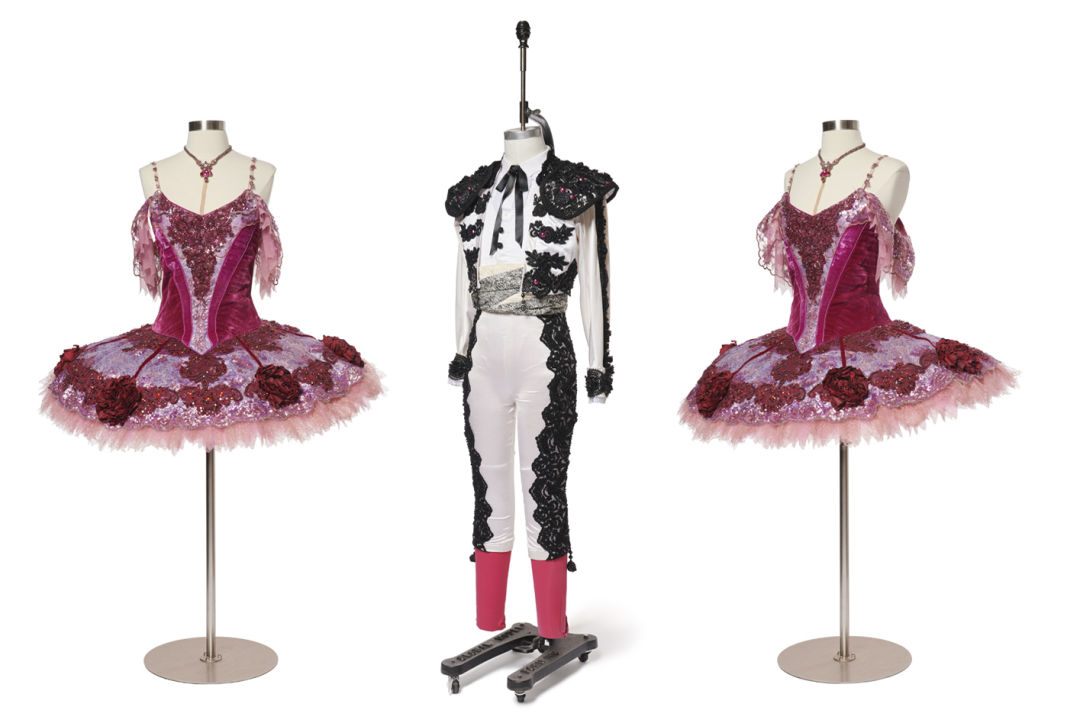
Houston Ballet's production of The Nutcracker requires costumes for 45 mortal characters and 237 fantasy characters. Including costume changes and duplicates, that comes out to over 1,500 costumes in total.
Image: Anthony Rathbun
From all this merry chaos comes holiday magic. Holiday shows in Houston are big business for the arts community. Across the organizations we feature here, the combined ticket revenue is more than $6 million. Audience numbers for the shows will cross the 250,000 mark, including special performances for school groups. Performing arts organizations large and small are offering some version of a holiday show, whether a seasonal classic, one that takes place during Christmas, or one that is offered as family entertainment during the holiday season.
Bringing in audiences around the holidays not only helps raise ticket revenue, it may also introduce new theatergoers to an organization’s programming. For many, seeing shows like A Christmas Carol or The Nutcracker or Stages’ annual Panto productions are family traditions. The people working in the costume departments of the organizations putting on these shows are more than happy to add to the holiday magic these families come back for year after year, even if all the preparation does involve some creative problem solving.
“This production of The Nutcracker was designed and built in 2016,” Fox says. Since then, it’s seen its fair share of challenges: damages from Hurricane Harvey in 2017 and a shortened performance schedule in 2020 due to the pandemic.
“We're trying to make more of the same costumes for certain groupings, like the Sugar Plum Fairy and the Nutcracker Prince,” Fox explains. “Also, our big groups like snowflakes and flowers. We want to add to the numbers so that there's less panic between shows in trying to set up the next show.”
That means creating duplicate costumes for a show that’s already got a bunch of them. Fox estimates there are more than 1,500 costumes for the beloved ballet. But having more Sugar Plum Fairy tutus means each dancer in the role gets her own, instead of sharing. When dancers share a costume, Fox’s team needs to sanitize them between shows and ensure they have the right hooks and eyes to accommodate different measurements on different dancers. More costumes may seem like more work, but it’s much less stress.
Her counterparts at the Alley would agree, where a similar situation is unfolding on Texas Avenue: In a shop corner high above street level, a vivid green-and-gold brocade dress that the Ghost of Christmas Present wears sits beside its in-progress twin.
“This version is for the understudy,” Floyd says, motioning toward the dress form, which has 15 yards of fabric spilling off of it. “We’ve been working this year to ensure that every understudy has his or her own costume.”
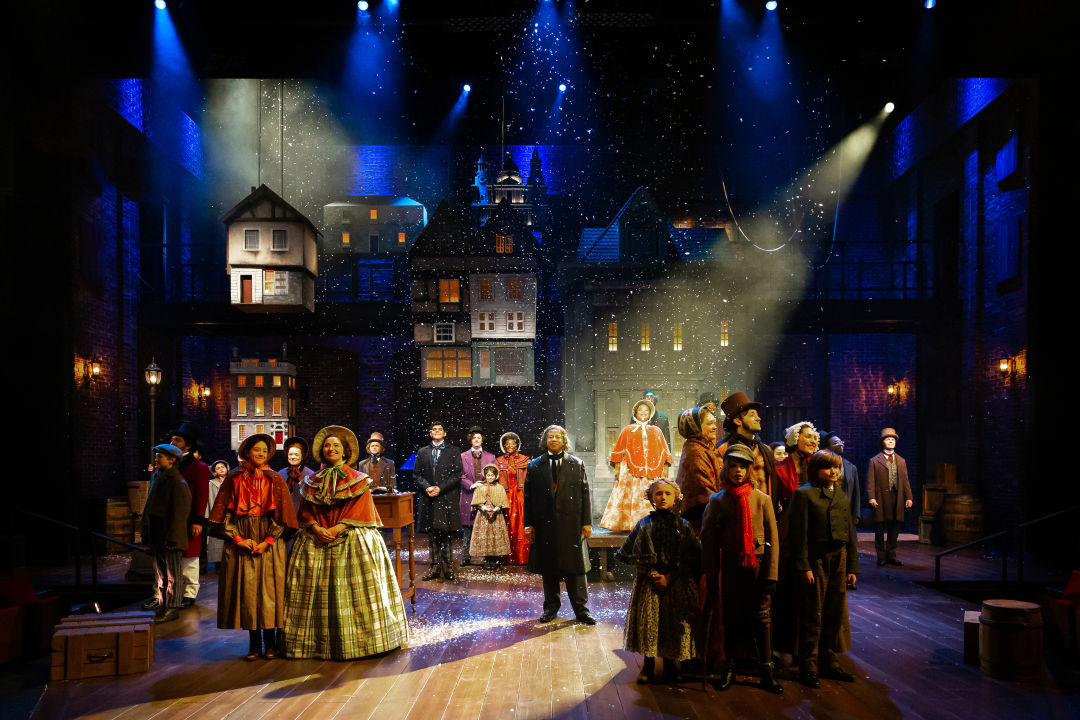
Holiday shows like Alley Theatre's A Christmas Carol are big business for the local arts community, with combined ticket revenue exceeding at least $6 million.
And what costumes they are. The Ghost of Christmas Past’s white-and-gold confection is sewn through with LED lights that are connected to the sound board and light up on cue. The tiny tunic and jacket for Ignorance and Want have been beaten and brushed to look old and threadbare. A gown for the Fezziwig party is a vibrant red-and-white silk number with delicate rouching on the sleeves. Among the Nutcracker’s glittering wardrobe are tutus in eye-popping pink, set with twinkling sequins and rhinestones and accented with green ribbon. There are also delightful white dresses embellished with gingerbread men, lollipops, and a host of other candy props.
Every bow, every bustle, every petticoat, every stripe and polka dot and lining is made to enhance the production—not only for audiences, but for the performers as well.
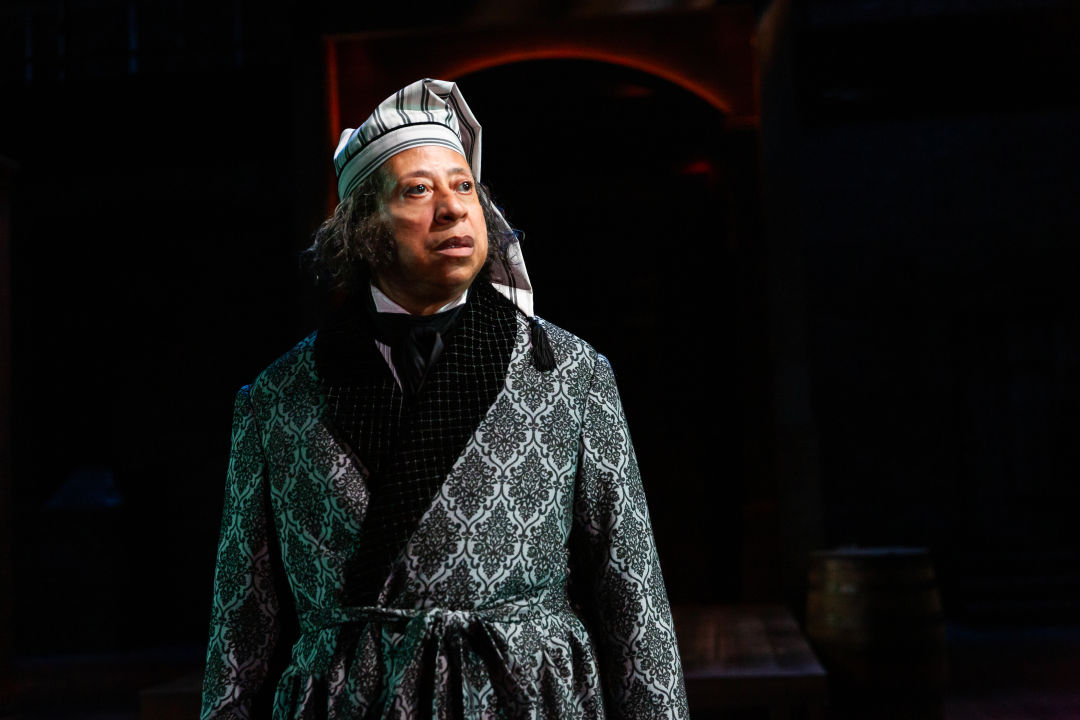
Well-designed costumes, like this one worn by David Rainey, who plays Scrooge in A Christmas Carol, help local actors and dancers more easily get into character.
“The costume piece that makes me feel most like Scrooge is probably the nightcap,” says David Rainey, who plays the miserly curmudgeon in A Christmas Carol. “It's the adornment that most specifically characterizes Scrooge and makes any image of him immediately identifiable.”
In a show like The Nutcracker at the Houston Ballet, the costumes show a dizzying array of personalities, from the formal party wear at the beginning of the ballet to the parade of sweets and treats in the second act. One of those is a gorgeous red-and-black number for the Spanish chocolate dance.
“It's a big, heavy costume,” Fox says. “There's lots of ruffles. And there's some lace involved and a lot of appliqué that is sequined on. So, it's a challenge to make it.”
Aaron Daniel Sharratt dances both Drosselmeyer and the Nutcracker Prince in the production and says his costumes help him more easily get into character for each role.
“As soon as I put on my Prince costume I feel regal and strong but also calm and humble while dancing with the Sugar Plum Fairy,” he says. “The Drosselmeyer costume makes me feel mysterious and quirky, teetering on the edge of mischievous.”
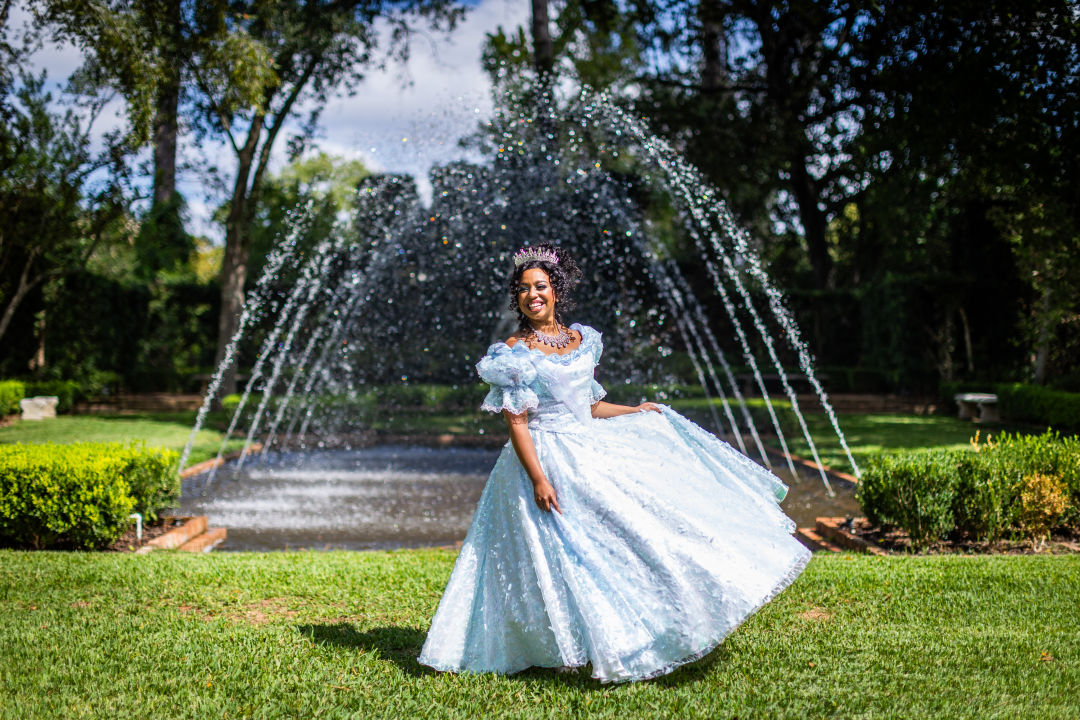
The costumes in the TUTS’ production of Rodgers and Hammerstein’s Cinderella evoke the classic Disney looks of the characters.
Colleen Grady, the costume designer for TUTS’ production of Rodgers and Hammerstein’s Cinderella, opening at the Hobby Center for the Performing Arts on December 5, has a challenge of her own: Cinderella needs to seamlessly transition from rags to the iconic silvery blue ball gown known from the classic Disney animated film.
“It takes a lot of science and math to make that costume change happen,” she says. “It’s knowing where you need to put a seam, where to leave a thread to be pulled, ensuring the layers are the correct lengths.”
The result, she promises, will be one audiences won’t forget.
Like The Nutcracker and A Christmas Carol, the costumes for Cinderella are created by hand, and their distinct color palettes are meant to cue the audience in on the personalities of different characters. Grady infused the stepmother’s outfits with shades of green, to match her envious nature. Cinderella wears blue tones, which Grady says evoke the classic Disney look of the character. The stepsisters wear a cacophony of stripes and flowers and polka dots, a visual representation of how over-the-top they are.
“Those costumes are such fun!” Grady laughs. “And just so stupidly wrong in the best possible way.”
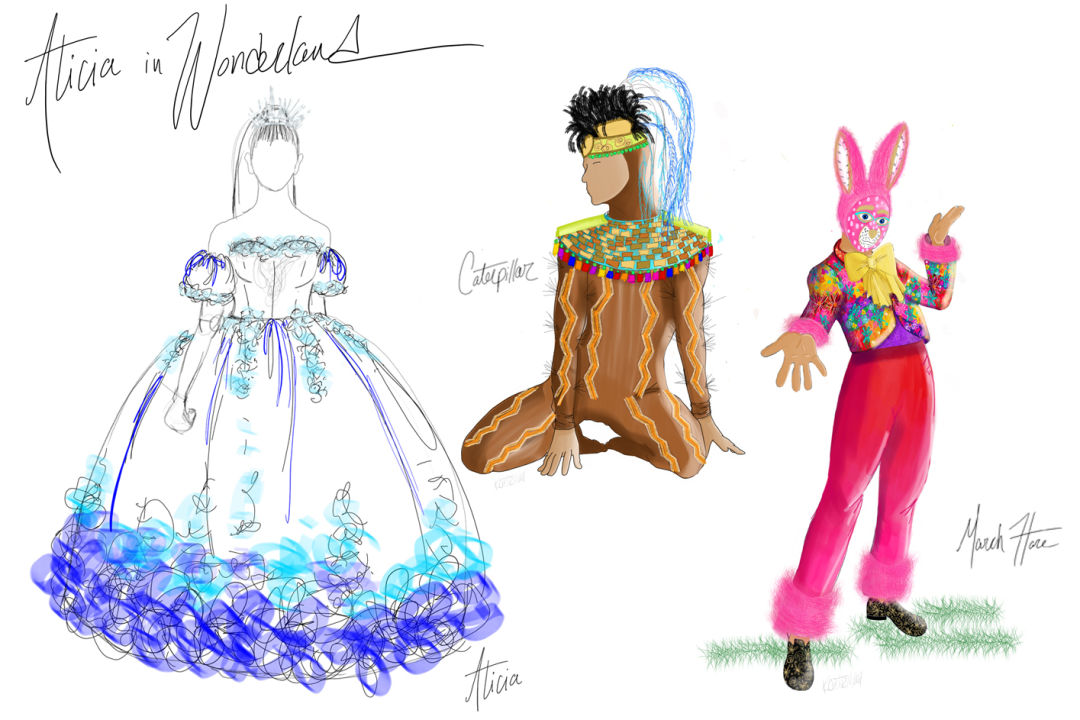
The costumes for Panto Alicia in Wonderland were designed to be colorful and over the top in their silliness.
Kristina Ortiz is also using color to help define a show. She’s creating pieces for Panto Alicia in Wonderland, Stages’ offering this holiday season, created in collaboration with TEATRX. The updated take on Alice in Wonderland is the story of a girl on the cusp of her quinceañera, trying to reconcile her family’s traditions with her own dreams for her future.
“Panto is always over the top, with lots of silliness,” she explains. “So, we’re exploring that visually in the costumes. We did a Carmen Miranda–style turban for the Mad Hatter, with pan dulce and coffee beans on it. It’s so vibrant. And the quince dress has yards and yards of tulle and organza, all this sparkling fabric.”
On the other side of downtown, Matt Hune is readying for Peter Pan, opening December 7 at Rec Room Arts. It’s a brand-new adaptation of the boy who refuses to grow up, taking place on Christmas in London in the 1980s.
“The show takes place in the nursery,” says Hune. “That informs how we’re creating the set and the costumes. It’s very much about watching how that space morphs into Neverland.”
That includes some creative approaches to costuming. Hune says the actors will vary their costumes with things pulled from trunks or under the bed on stage, giving the show a feel of being created as it goes along.
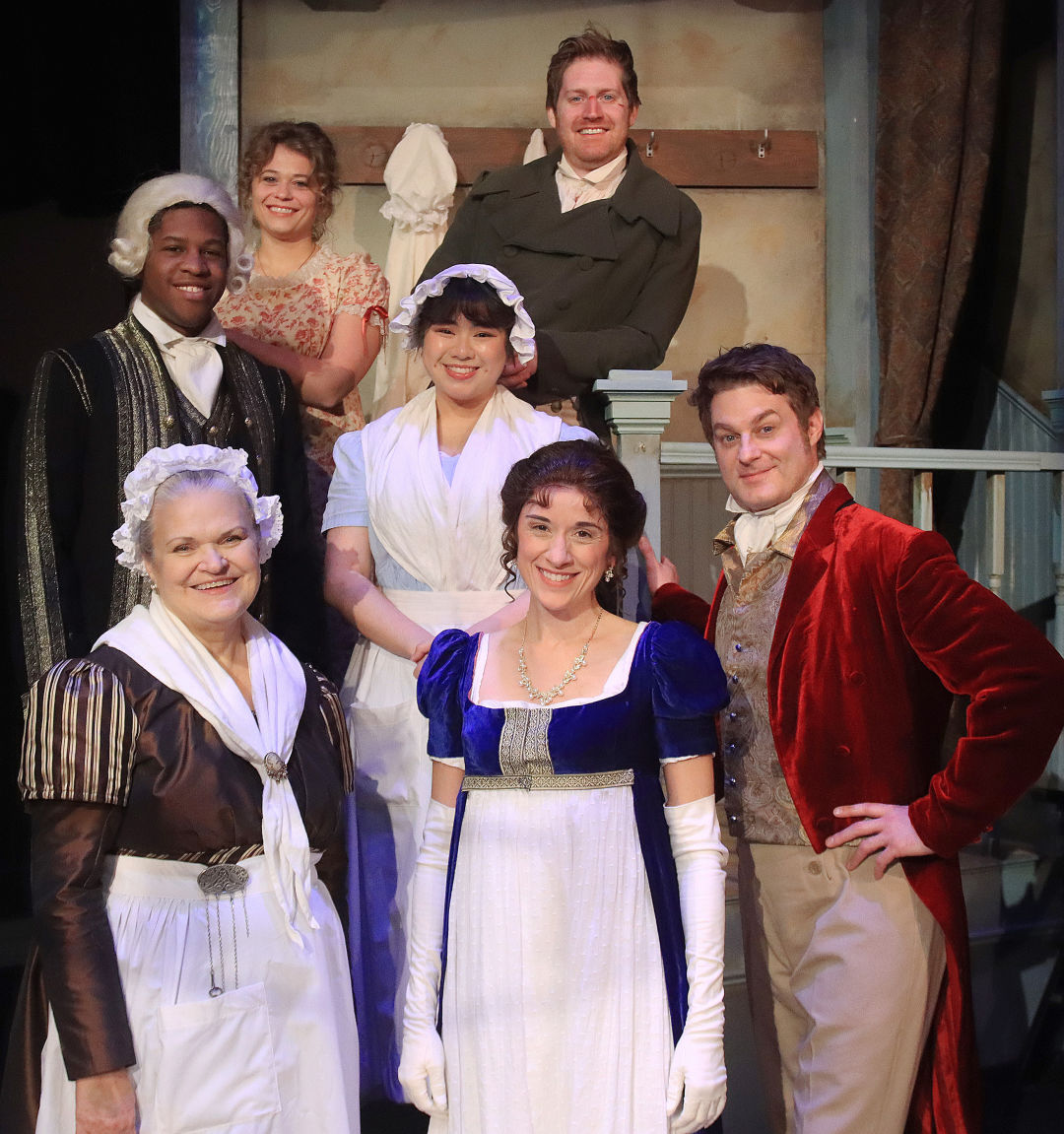
Regency Era fashion reigns supreme in Main Street Theater’s Georgiana and Kitty: Christmas at Pemberley.
Image: Courtesy Main Street Theater
Designer Donna Schmidt is also creating an English world for Main Street Theater’s Georgiana and Kitty: Christmas at Pemberley, opening November 18. But her England is Jane Austen’s Regency Era, known for its empire-waist dresses and waistcoats with tails. She’s sourced several pieces from the Costume Connection, a warehouse and resource in Houston that helps theater companies find appropriate pieces.
“Whatever I couldn’t source or find, I designed,” she says. Among her favorites are the costumes worn by the women in the second act of the show, which she says include gowns in dusty sherbet and a particularly lovely gold dress. “That’s for Georgiana, and we selected it because it helps her stand out, and it’s a representation of how her character grows throughout the show.”
Now that it’s November, the costume crews are putting final touches on pieces as rehearsals get underway and opening nights loom. Once the shows open, they’ll be standing by, ready to stitch up fallen hems, sew on lost sequins, or replace a ripped ruffle. They’ll wash and brush and spray and dry, making sure that when the actors and dancers next step on stage, their costumes are in perfect condition, adding to the perfect magic of Houston’s holidays on stage.


